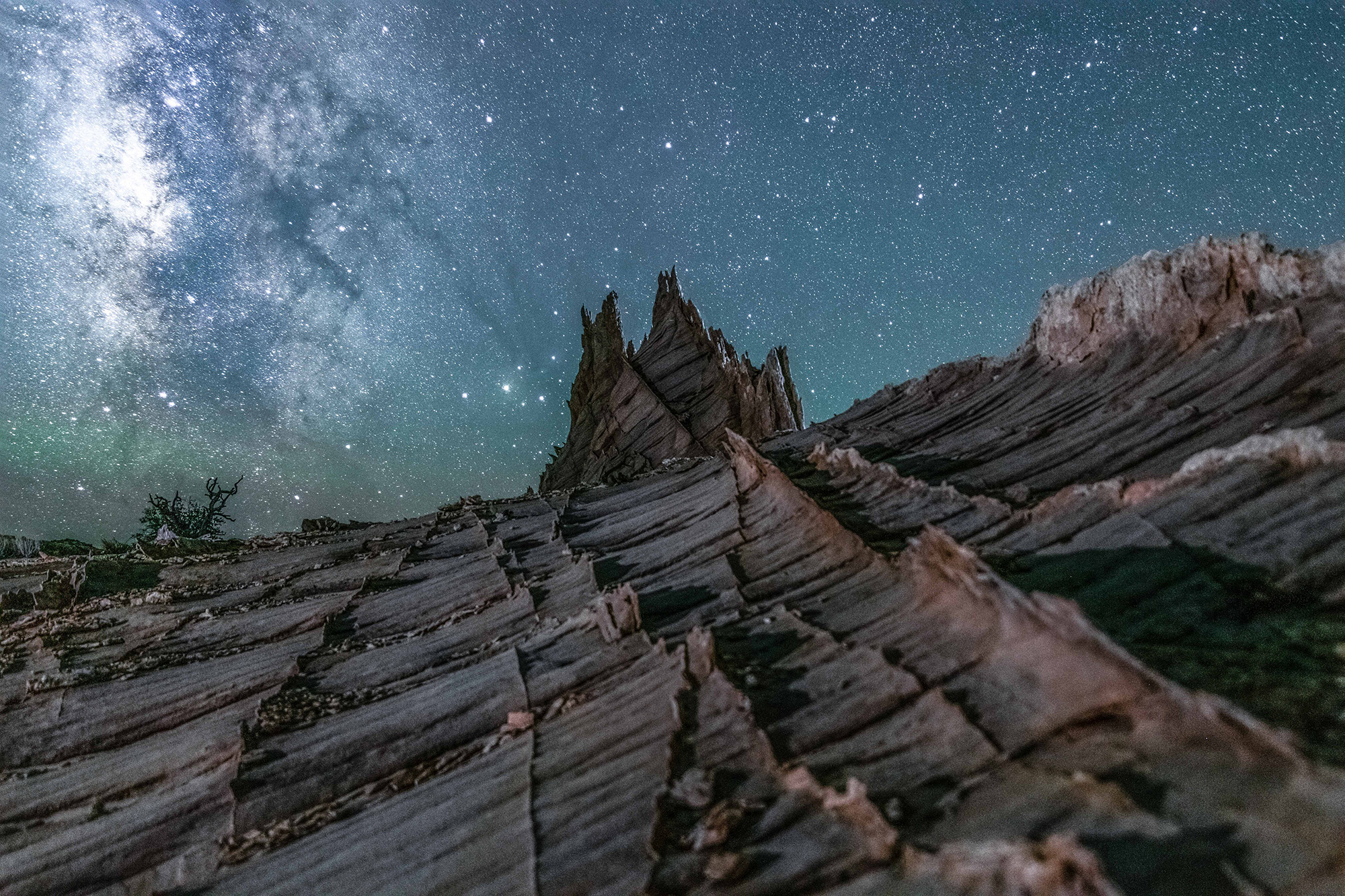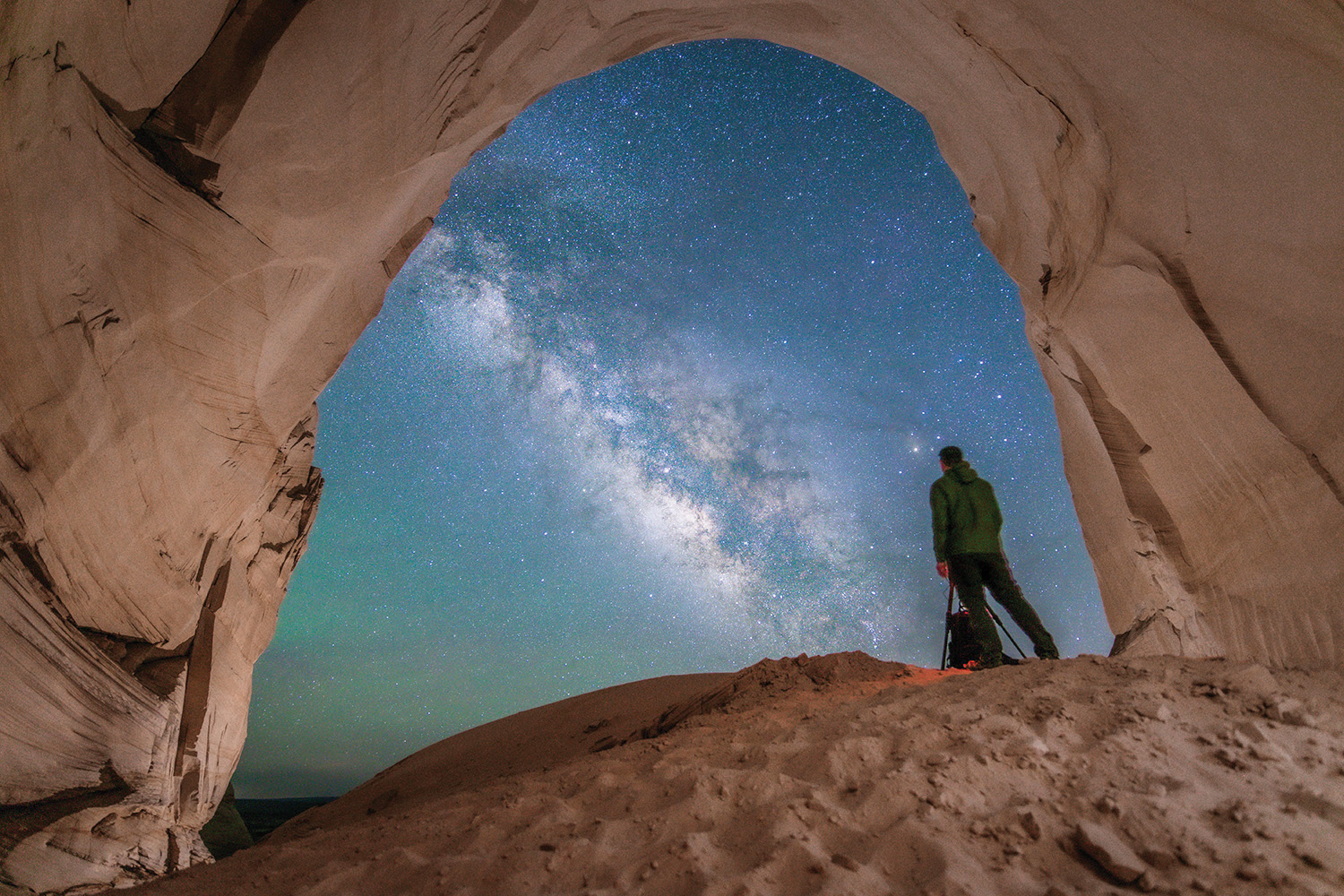
The Beginner’s Guide To Star & Milky Way Photography
Courtesy of Dreamland Safari Tours
If you’re looking to photograph the night sky, Southern Utah is the place to be: with a combination of some of the darkest skies in the lower 48, dramatic landscapes, and amazing camping it doesn’t get much better than here. No matter if you are a seasoned astrophotography pro or a complete newcomer to photography, Southern Utah offers incredible opportunities to practice and improve your craft.
Astrophotography can seem dauntingly difficult from the outside but it doesn’t have to be. If you love the idea of creating amazing images of the night sky, and are just getting started, here are some of the basics you’ll want to know.
- The three most foundational pieces of equipment that you need are a tripod, a DSLR camera, and a wide-angle lens (16-18mm is a good start). Yes, there is a lot more equipment that can help improve your astrophotography outcomes, but if you’re just getting started this is what you’ll want to have on hand.
- Location & composition. Being able to competently photograph stars is important, but it (typically) doesn’t make for an engaging image. To create a beautiful composition, you’ll want to find a unique and powerful foreground. That’s why we at Dreamland Safari Tours frequently take photographers on overnight tours to locations such as White Pocket, Toroweap, or the Great Chamber.
- Milky Way season is from March to October in the Northern Hemisphere; during the winter months, the galactic core (i.e. the brightest part of the Milky Way) never rises above the horizon. In addition it is generally safest to venture out near a new moon to ensure that the moon doesn’t eclipse the brightness of the stars.
- Camera settings.A whole treatise can be written about this topic, but again — if you are just getting started, start by focusing on the basics. You have to shoot in manual mode, and use the following settings:
1) The lowest possible F stop (typically 1.4-2.8)
2) ISO in the 3200-12800 range; a higher ISO will make your image brighter, but also noisier
3) A very slow shutter speed in the 10-15 second range

Finally… to get really sharp and high-quality star images — including amazing Milky Way shots, star trails, and more — most serious photographers actually take a series of images that they then combine in post-processing. If that’s something you’d like to learn more about, come join us on one of our Milky Way Photography Workshops with acclaimed astrophotographer Cody York, who is now in his third year of teaching Milky Way Clinics for Dreamland Safari Tours at White Pocket and the Great Chamber. If you are not looking for photography instruction but could use some help getting out to the best astro spots that are typically far, far off the pavement (like Toroweap) — come join one of our overnight tours. Head over to Dreamland Safari Tours at www.dreamlandtours.net or give us a call at 435-644-5506 to find out more!



